Arabica coffee bean variety iron pickup coffee bourbon coffee Rosa coffee which tastes better
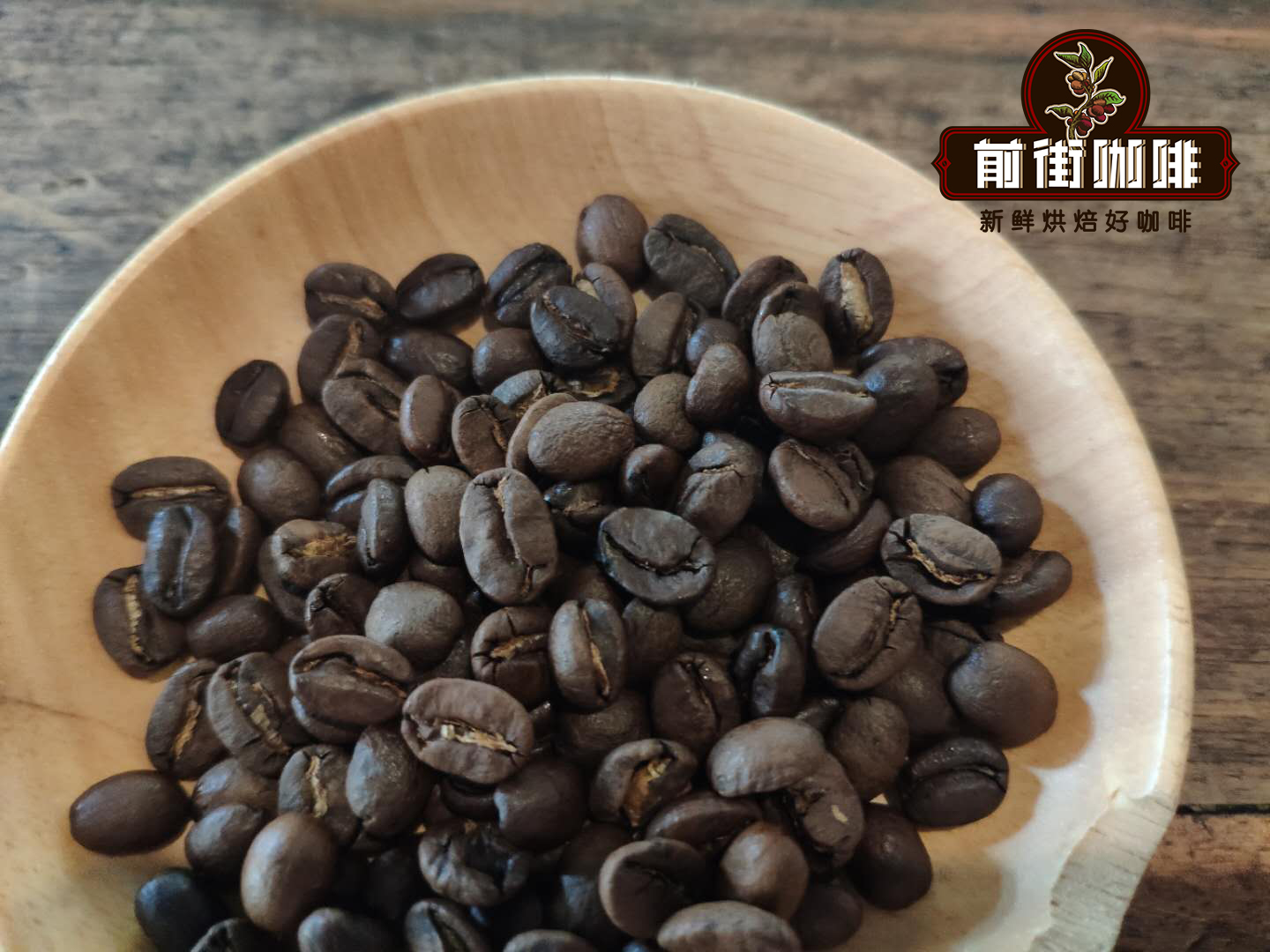
Professional coffee knowledge exchange more coffee bean information please follow the coffee workshop (Wechat official account cafe_style)
What do we talk about when we are having coffee? We share the flavor of coffee, the origin of coffee, the extraction parameters of coffee, the variety of coffee and so on. Coffee bean varieties will directly affect the flavor and quality of coffee, the planting requirements of coffee trees, the disease resistance of coffee trees and so on. Qianjie Coffee this time, let's explain the varieties of boutique coffee.
Coffee varieties were originally spread through more than ten centuries. In 1699 the East India Company brought it to Indonesia and planted it on the island of Java. The Dutch were the first people to introduce coffee from Arabia to Europe. They first introduced coffee to Batavia and then to Europe. In 1706, several coffee trees were transported from Java to Amsterdam and planted in greenhouses. In 1713 these seeds were cultivated and the seedlings were given to Louis XIV of France. In 1723 a French officer named Klee secretly brought the seedlings from the botanical garden in Paris to Martinique, where he took office. This is the first coffee tree in the entire Caribbean and spread throughout Central and South America. This is the Great Navigation Communication. Although Europe on the five continents of the world does not produce coffee beans, the Netherlands and France have made great contributions to the globalization of coffee. There is also small production from Africa of origin to the three main coffee growing regions: Asia and the Pacific, Latin America, Africa and Australia.
Major coffee producers in the African region
Located in the hottest center of the tropics, most African countries produce Robusta coffee beans. Arabica coffee beans (Washed Arabica) also grow particularly well in the high mountains of countries such as Kenya, Tanzania and Cameroon.
Africa is the birthplace of coffee, and there are naturally many coffee-producing countries. Coffee is produced in Congo, Rwanda, Kenya, Angola, Zimbabwe, Mozambique, Ethiopia and other countries.
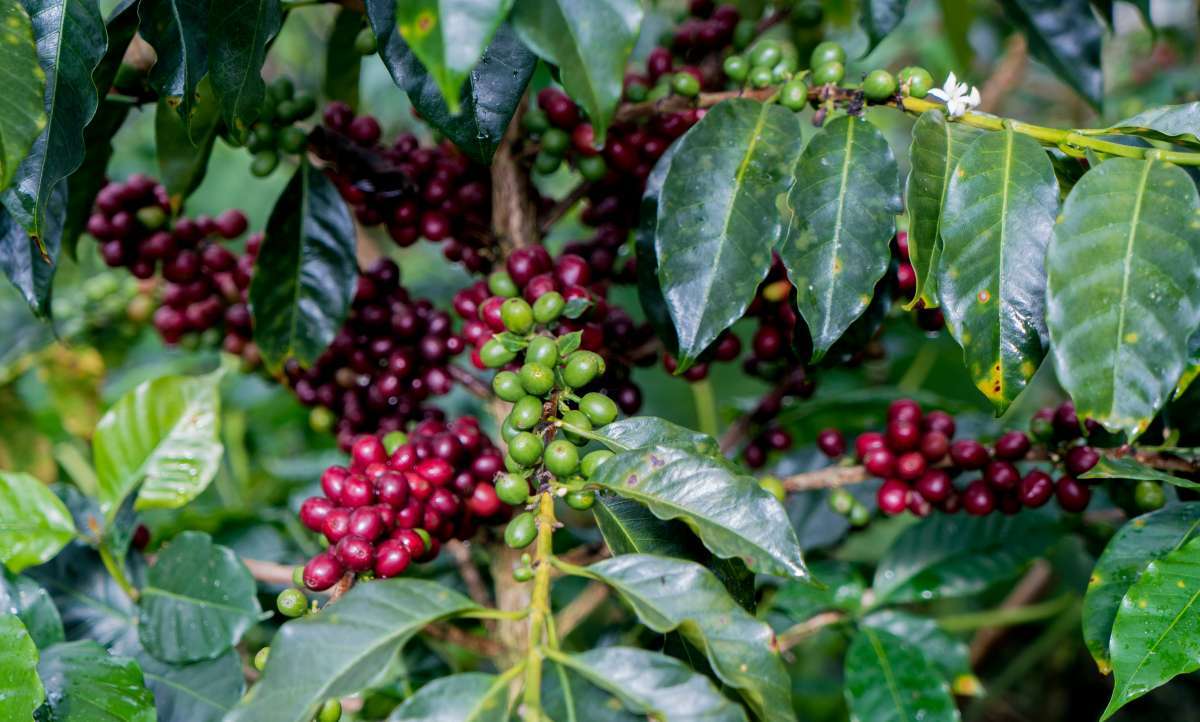
Major coffee producers in the Latin American region
Brazil, the largest country in South America, is known as the world's largest coffee producer with an average annual export volume of 30 to 40 million bags of coffee beans, accounting for almost 1/3 of the world's output. The main variety is the natural Arabica (- Natural Arabica, Arabica accounts for 24% of global coffee production, Robsta accounts for 9%). Brazil's Santos coffee is famous. Jamaica is most famous for the Blue Mountain Coffee, known as the "best coffee", followed by Colombia, Venezuela, Peru and Ecuador (washed Arabica coffee beans-Washed Arabica). Coffee occupies a very important economic position in countries such as Mexico, Panama and the Caribbean coast, and usually the coffee beans they produce (washed Arabica-Washed Arabica) are of high quality. Originally, Costa Rica alone took the characteristic flavor of "honey-treated Honey Process", but it was led by Elida Manor in Panama with ASD (Anaerobic Slow Dry) anaerobic fermentation and slow solarization.
Major coffee producers in Asia and the Pacific
Java, Manning and civet coffee in Indonesia; Mokasanani in Yemen; Yunnan coffee, Hainan coffee and Taiwan coffee in China; and coffee in India, Vietnam, Hawaii and other countries.
Due to advanced and excellent technology, the production of washed Arabica coffee beans-Washed Arabica',' washed Robusta coffee beans-Washed Robusta' and sun-cured Robusta coffee beans-Natural Robusta' has increased significantly in India and Indonesia. In the world coffee market, Arabica accounts for about 60% of the coffee and more than 35% of the Robusta coffee.
A major coffee producer in Australia
Australia (Australia) began to grow coffee around 1900 AD, with both Robusta and Arabica species, mainly in eastern Australia, roughly distributed in northern New South Wales (New South Wales), around Queensland (Queensland), and Norfolk Island Island. Northeast Queensland is a famous Skybury-growing area, while Norfolk Island is a small island in the South Pacific Ocean east of Australia, with about 20, 000 Arabica coffee trees.
The genre of coffee beans
In terms of biological classification, "kingdom, phylum, class, order, family, genus, species", coffee beans, coffee is Rubiaceae, coffee genus, of which there are only three kinds of coffee with commercial value.
Arabica species (Coffea Arabica), Robusta species (Coffea Robusta also known as Coffea canephora) and Liberia card species (Coffea Liberica), these three coffee varieties are called the "three native species of coffee".
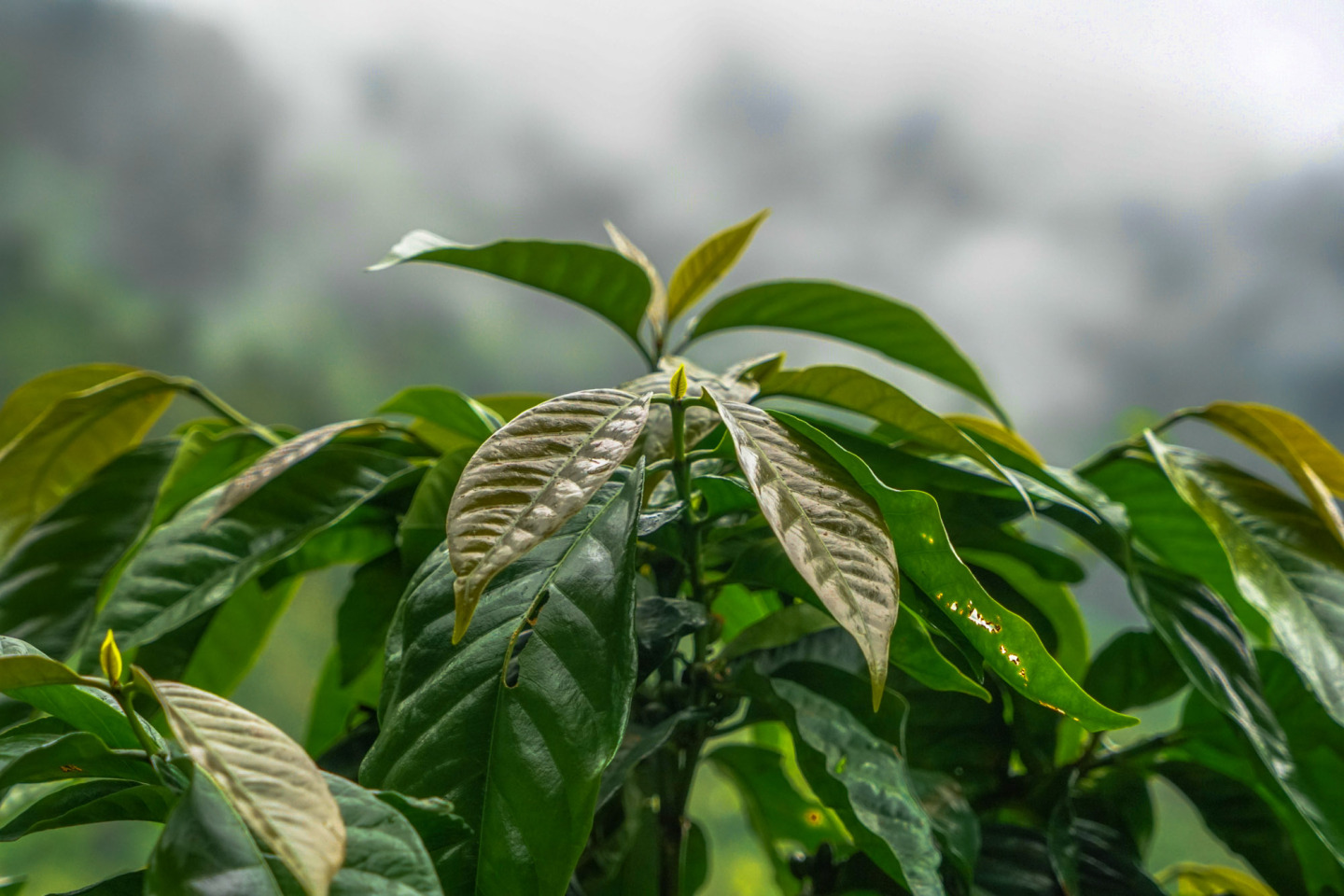
The three original species of coffee beans say:
1. Arabica species (Arabica) originated in Ethiopia, with the best flavor, aroma and quality, accounting for about 60% to 70% of the world's total production. The widely cultivated varieties are the bulk demand for boutique coffee.
two。 Robusta, which originates from Congo and is cultivated in Africa and Indonesia, is resistant to pests, but its quality and flavor is worse than that of Arabica. Instant coffee is commonly used in this variety. Robusta, also known as medium-grain coffee, accounts for about 30%. It is mainly used in instant and canned coffee, and its caffeine content is twice that of Elaraby.
3. Liberia card species (Liberica) originated in Liberia, also known as large-grained coffee. Due to its intolerance to leaf rust and poor flavor, it is only traded in Surinam, Libya, C ô te d'Ivoire, Malaysia and other countries in West Africa, and is not popular all over the world. But the adaptability is the strongest, and the improved coffee variety has a very important position.
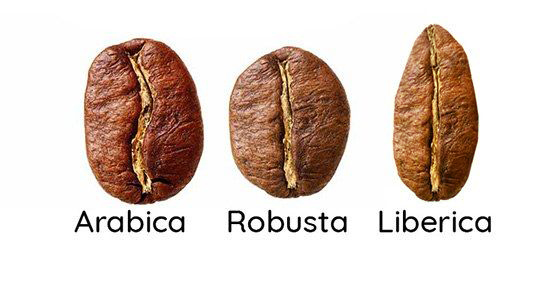
Among them, Arabica species has the most commercial value, and a large proportion of them are put into research and classification, so it is subdivided into many detailed coffee varieties, of which Iron pickup and bourbon are the most ancient.
Iron pickup (Typica)
The varieties closest to the original species are native to Kaffa in Ethiopia and Yemen. The ancestor of the Arabica variety, the Ironka variety is excellent, showing excellent purity and consistency, sour lemon taste and sweet aftertaste. The top leaves of Tiebika are bronzed and the beans are oval or thin in shape; the tree is 3-4 meters high, conical, and the angle between the trunk and branches is about 50-70 degrees. The leaves are narrow and bronzed. Berries are more oval than other varieties. There is a name of Arabigo or criollo in Central America. The resistance to leaf rust is low, which makes it difficult to take care of, the amount of seed set of trees is low, and the harvest period is long and the yield is low. Iron pickup has been genetically evolved, and many variants are more adaptable to the surrounding environment and produce new characteristics, which are generally considered to be new coffee varieties. For example, Mexican iron pickup is slightly different from Hawaiian iron pickup, so they have different names. Criollo (South America), Arabigo (America), Kona (Hawaii), Pluma Hidalgo (Mexico), Garundang (Sumatra), Blue Mountain (Jamaica, Papua New Guinea) San Bernado&San Ramon (Brazil), Kent and Chickumalgu (India) are all iron pickup coffee.
Representative varieties:
Front Street Coffee one Blue Mountain, Jamaica
Producing area: blue Mountain producing area of Jamaica
Manor: Clifton
Altitude: 1310 m
Variety: iron pickup
Treatment: washing
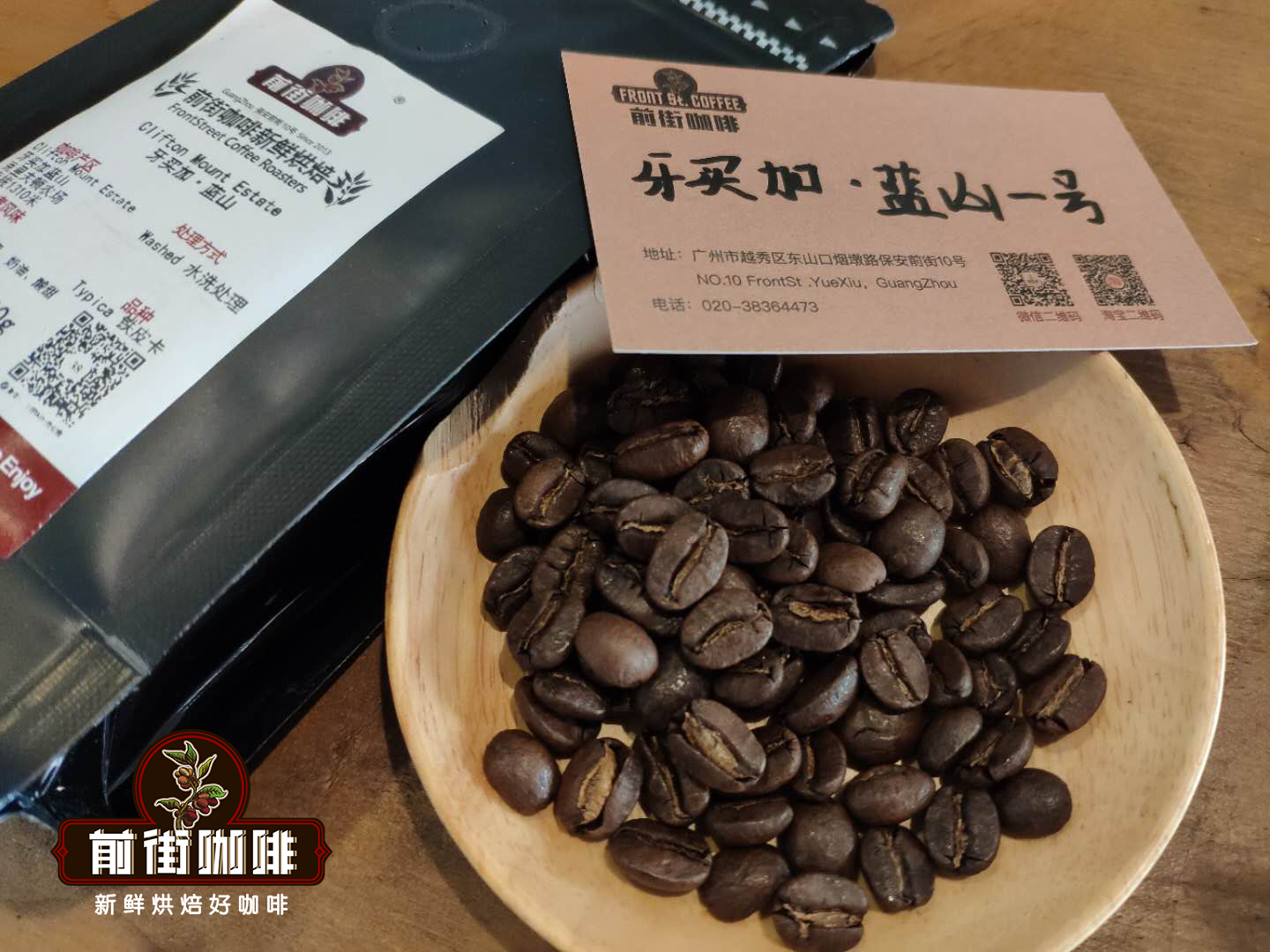
Qianjie Coffee Yunnan Huaguo Mountain
Producing area: Baoshan, Yunnan, China
Altitude: 1200 m
Variety: iron pickup
Treatment: washing
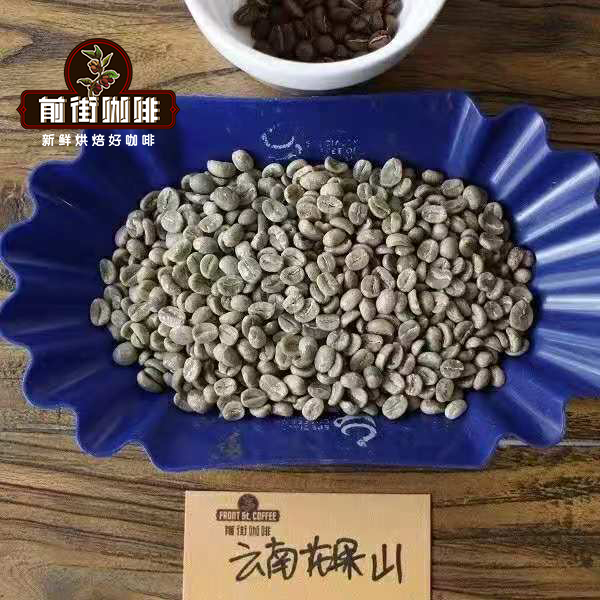
Front Street Coffee Erida Manor, Panama
Producing area: Pokuit, Panama
Manor: Erida Manor
Altitude: 1850 m
Variety: iron pickup
Treatment: insolation
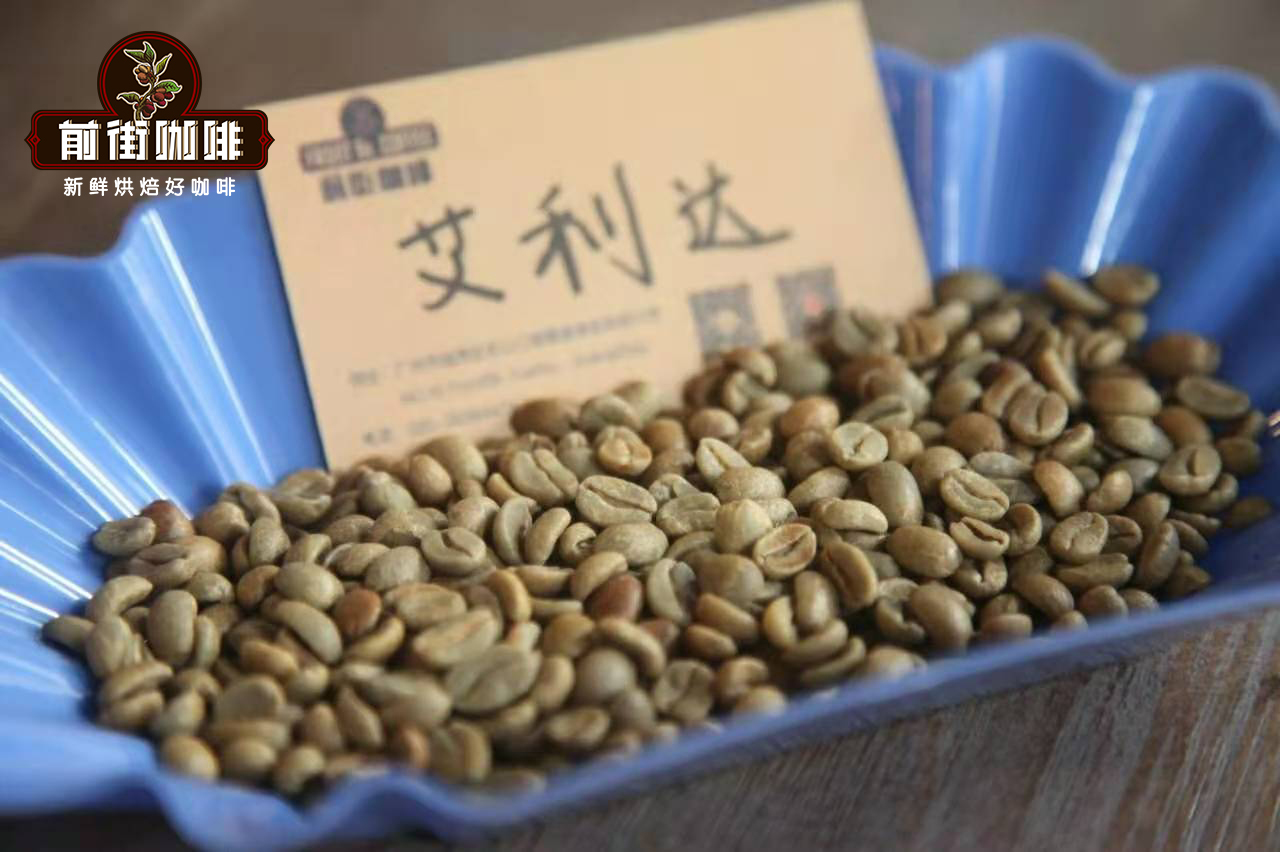
Elephant bean (Maragogype)
Marrago Rippi (Maragogype or Elephant Bean) is the best-known variety of beans in Bika. It was found in the Brazilian Bahia called Maragogype that the bean body is at least three times larger than the average Arabica, so it is known as the elephant bean. The taste is mild with slightly sweet and sour taste, and it is not easy to bake. Shallow baking is recommended, as deep baking will not show its characteristics. In 1870, it was first found in the Maragogype bean-producing area of Bahia state in northeastern Brazil that elephant beans had a poor flavor in the low altitude area, but better flavor at high altitude, mild sour taste and sweet fragrance.
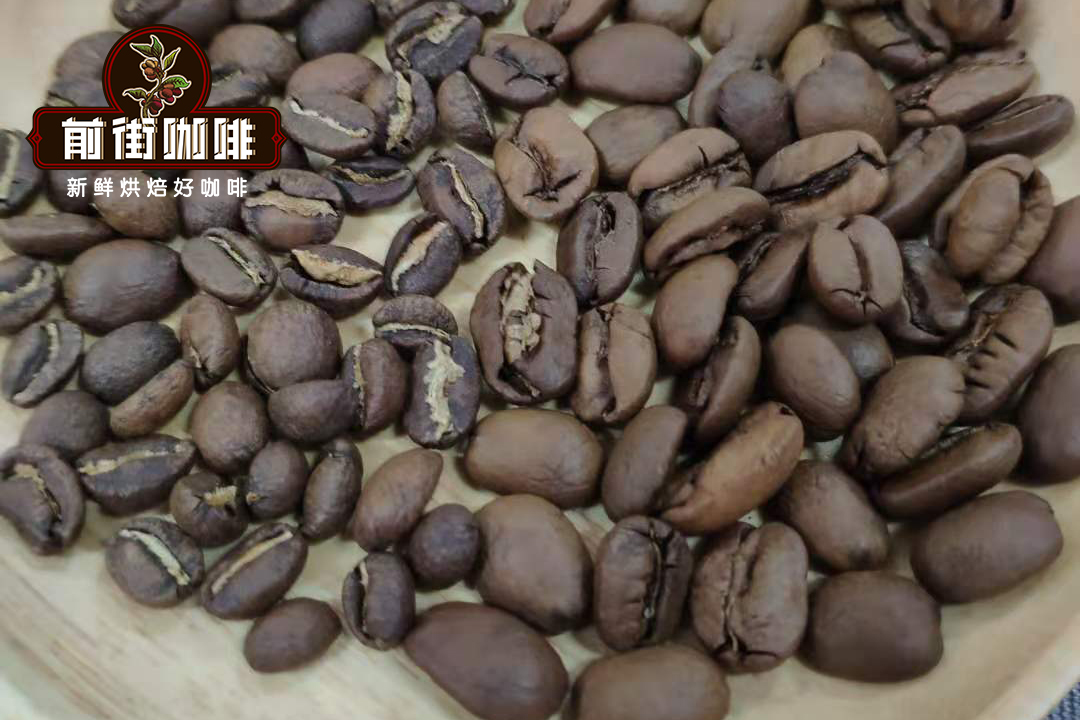
Bourbon (Bourbon)
The variety mutated from the iron pickup, like the iron pickup, is the closest to the original species. Bourbon spread from southwestern Ethiopia to Yemen, and the bean shape changed from thin to round. It was named bourbon in 1715 after France transplanted round beans from Yemeni mocha to the island of Bourbon on the east coast of Africa (renamed Reunion after the French Revolution). Bourbon beans spread to Brazil and Central and South America in 1727, and the British transplanted Yemeni mochas to St. Helena Island (where Napoleon was later imprisoned) in 1732. Bourbon is the winner of the American boutique coffee cup test. Bourbon produces 20% more fruit than tin pickup.
Bourbon features: complex acidity, sweetness of caramel, balance. The bourbon tree is high and prosperous, the micro-serrated green leaves are relatively broad, and the strong coffee beans are smaller and denser, so the appearance of beans is smaller and more round than that of iron pickups. The fruits are red, yellow and orange, which vary according to variety and soil texture, and red fruit is the most common. Although the seed set of bourbon is higher than that of tin card, it is also a variety with low yield and is extremely vulnerable to leaf rust, berry disease and nematode infection. To produce beans with unique and superior flavor, it is appropriate to grow at an altitude of 1100 to 2200 meters.
Qianjie Coffee Brazil Red bourbon
Producing area: Minas South, Brazil
Altitude: 1000 m
Variety: red bourbon
Treatment: half-sun
Yellow bourbon
After ripening, the fruit of yellow bourbon is not as red as ordinary coffee fruit, but yellow. It was first discovered in Brazil in 1930 and is now mainly grown in Brazil. It is generally believed that it may have been mutated by a cross between a bourbon with red fruit and a variety of iron pickup with yellow fruit called "Amerelo de Botocatu" (discovered in Sao Paulo in 1871). Because of its low yield and relatively intolerant to wind and rain, it has not been widely planted. However, when planted in high altitude areas, it will have excellent flavor performance, which is more common in recent years.
For example, the Brazilian Queen Manor Yellow bourbon of Qianjie Coffee presents a sweet and soft fruit flavor, obvious nutty flavor, balanced and supple acidity, weak and clean bitterness, rich chocolate aroma and nutty flavor, bright and refreshing taste.
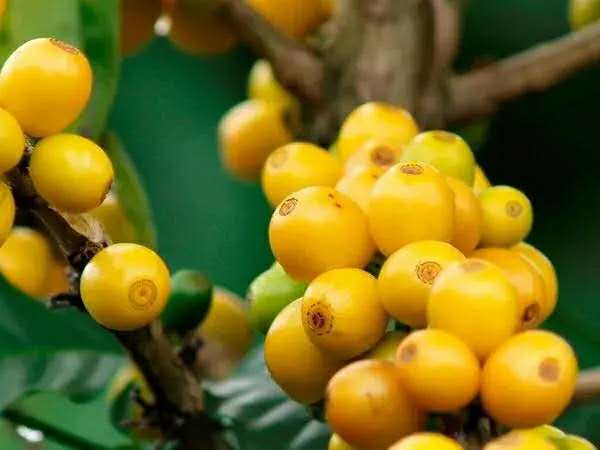
Qianjie Coffee Queen Manor of Brazil
Producing area: Mojiana, Brazil
Manor: Queen's Manor
Altitude: 1400-1950 m
Variety: yellow bourbon
Treatment: insolation
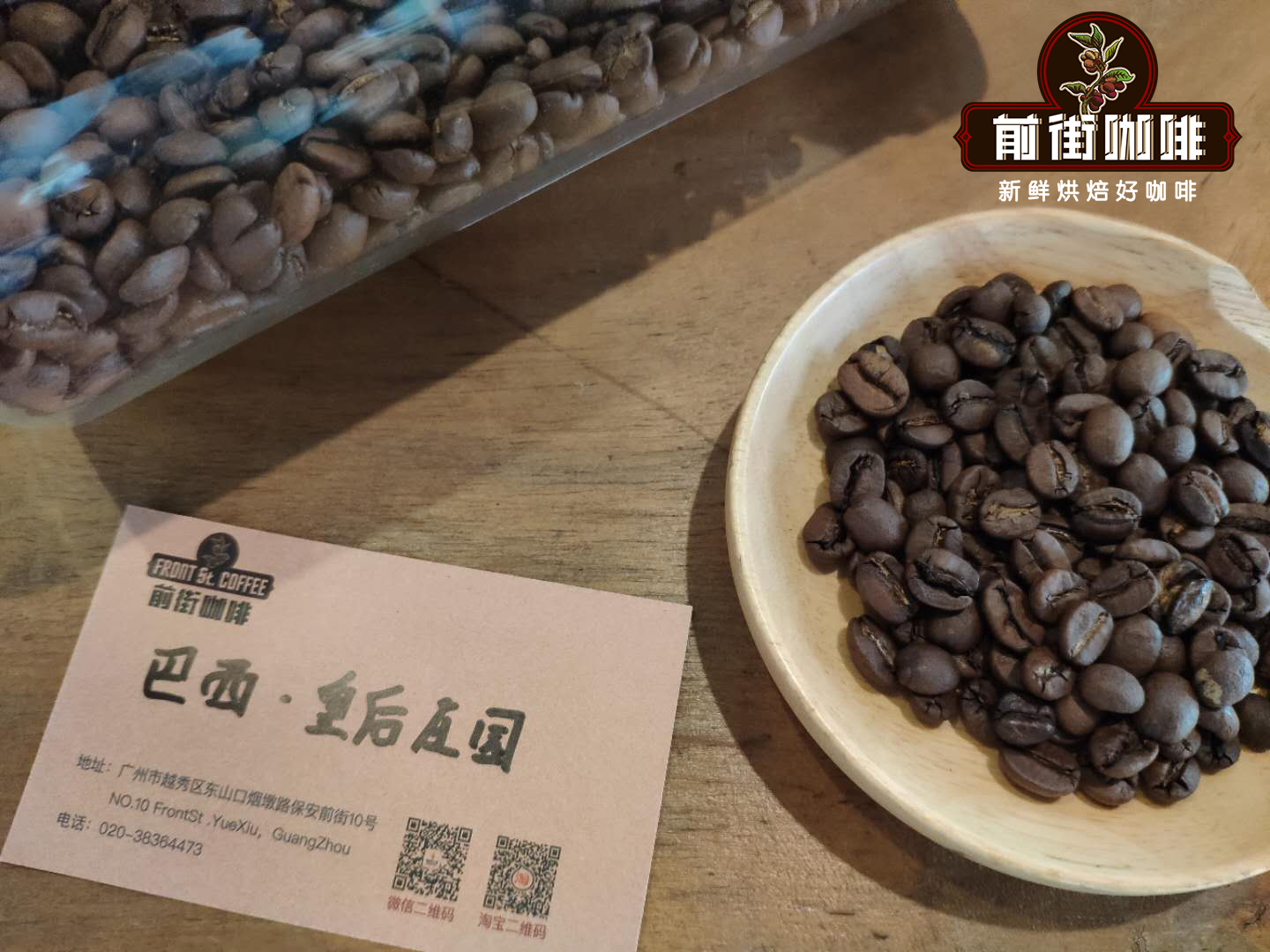
Pink bourbon (Pink Bourbon)
Pink bourbon coffee fruit appears pink when it is ripe. It is a very rare new variety, which is bred by the cross between red bourbon and yellow bourbon. The reason why pink bourbon is rare is that it is difficult to maintain this beautiful pink, sometimes some orange bourbon will be harvested, that is because the color of coffee fruit is ultimately determined by the recessive genes in the pollen grains.
Among the selected pollen grains to be crossed, there are both yellow genes inclined to yellow bourbon and red genes inclined to red bourbon, and these are recessive genes, which are very easy to interfere with each other. Pink bourbon is not easy to produce, in addition, pink bourbon is very similar to immature red bourbon, is not easy to recognize, and is often mixed together, which is why pink bourbon is rare.
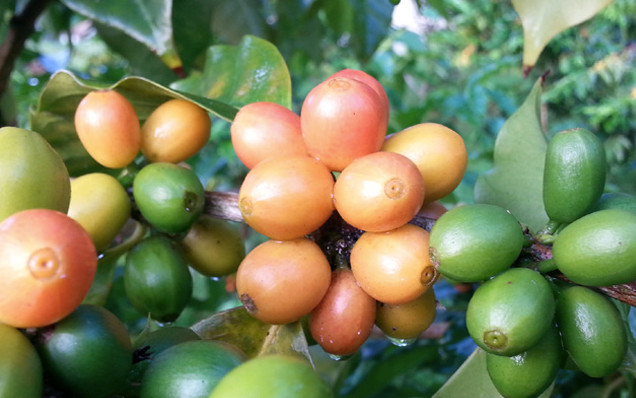
Pink bourbon was first planted by Gabriel Casta ñ o, a coffee farmer in the Huilan region, whose farm is Finca La Granada, which can reach 1800 meters above sea level, with warm days and cool nights, providing a suitable stressful environment for coffee trees. The farm covers an area of only 2 hectares, and Gabriel has 8000 pink bourbon plants. The rich flavor shown in the cup test has made the pink bourbon more and more famous.
At the beginning, it was mixed with other bourbon, Kaddura, and then picked and treated separately, and its cup performance is also very special, different from the general flat flavor of bourbon. Pink bourbon has fresh floral aromas, sweet fruit juices of blueberries and green grapes, cherry flavor in the middle, and sweet taste like yellow sugar at the end, in terms of acidity. More show the performance of citrus berry compound. At present, it is mainly grown in Colombia and Guatemala.
Front Street Coffee Columbia Isabella
Producing area: Cymbidium Colombians
Altitude: 1760 m
Variety: pink bourbon
Treatment method: semi-washing
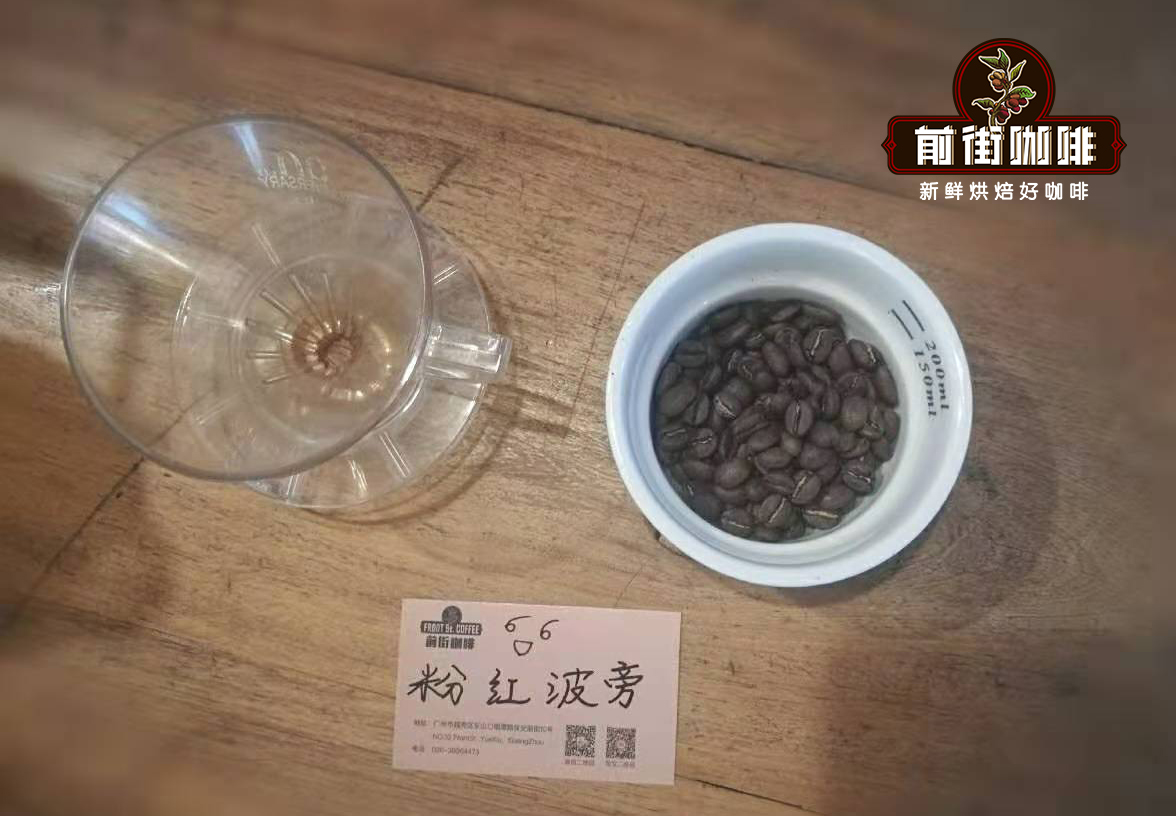
Pointed body bourbon (Bourbon Pointu)
Leroy, a coffee farmer on Bourbon Island in 1810, found that the pointed Bourbon coffee trees were relatively small and yielded pointed fruit, which was very different from the round growth of Bourbon. It was not until the 20th century that scientists discovered that pointed bourbon contained only half as much coffee as the average Arabica. Pointy bourbon is also called Laurina or Leroy. [Coffea Laurina] is the scientific name of sharp-bodied bourbon, and [Leroy] is the name of the farmer who discovered this variety. Commonly known as [Bourbon Pointu].
Due to the weak body bourbon, easy to catch disease and low yield, local farmers are on the verge of extinction because of their low enthusiasm for planting. Until 1999-2007, with the efforts of France and Japan, it was successfully restored. The pointed bourbon existed only on the island of Bourbon 2000 years ago, before it was successfully tested in Colombia and El Salvador.
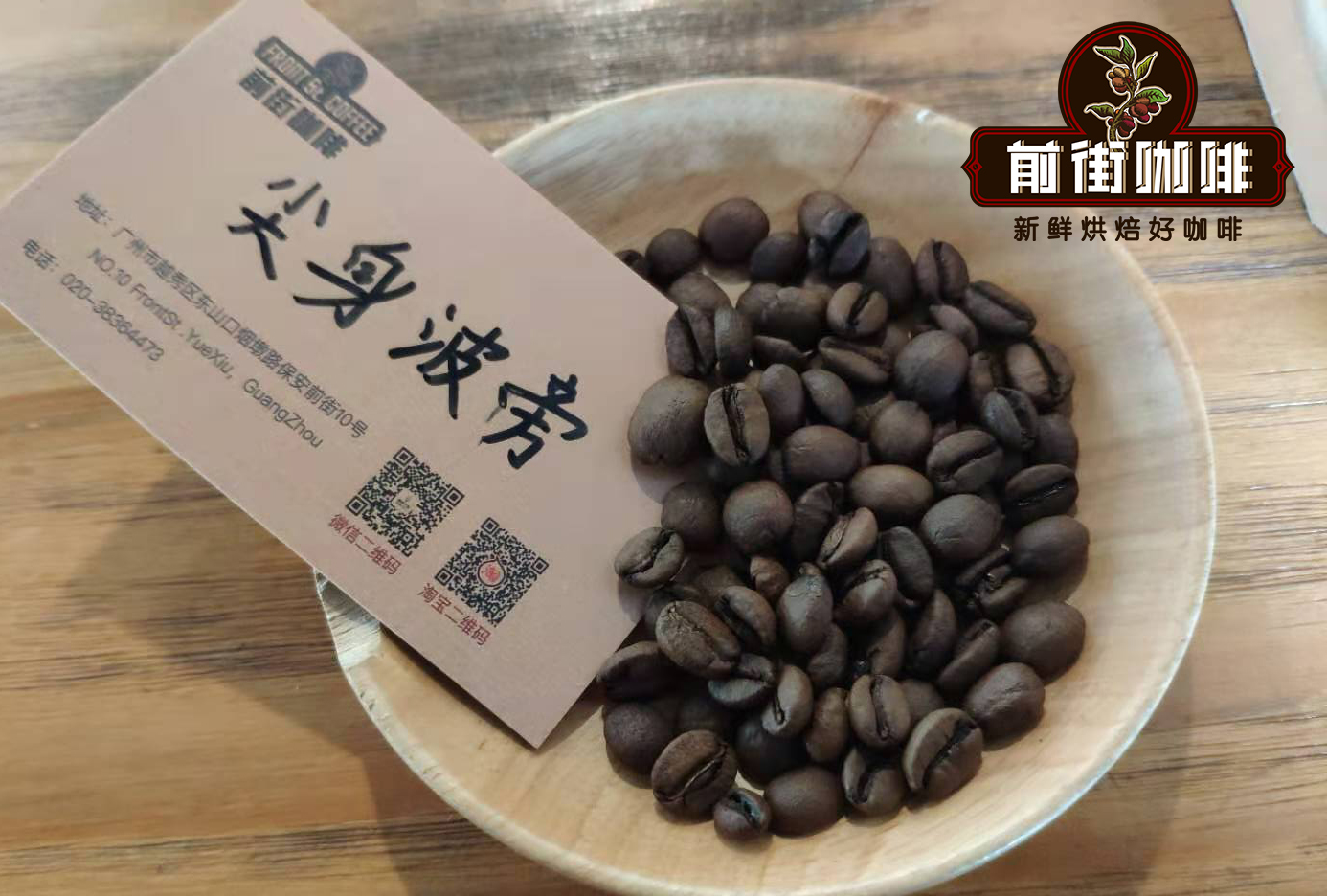
Pacas (Pacas)
Pacas is a natural variety of bourbon, first discovered by the Pacas family in El Salvador's Santa Ana producing area in 1949. Fernando Alberto Pacas Figuero found some different morphological plants on his family's own estate, Finca San Rafael, and then he began to collect seeds and select them.
In 1956, Francisco de Sola and Fernando's son, Fernando Alberto Pacas Trujillo, began to study the Pacas variety with the help of Florida professor William Cogwill. They compared the bourbon species of San Ramon with an "unknown" new variety, and this "unknown" variety showed completely different characteristics, plant morphology was also different from bourbon, with shorter node spacing and larger fruiting area, and finally. They named the variety "Pacas" (Pacas). Pacas's coffee plants are smaller, can be planted more closely, and have higher yields than native bourbon.
In 1960, the Salvadoran Coffee Institute (Salvadoran Coffee Research Institute, ISIC) began a pedigree selection project for Pacas, which is widely planted in El Salvador. Pacas accounts for about 25% of its total coffee production. In 1974, the Honduran Coffee Institute introduced Pacas and grew it in Honduras.
Front Street Coffee, Honduras Shirley.
Producing area: Masaguara, Honduras
Manor: Moca Manor
Altitude: 1500-1700 m
Variety: Kaddura, Kaduai, Pacas
Treatment: fine washing whisky barrel fermentation
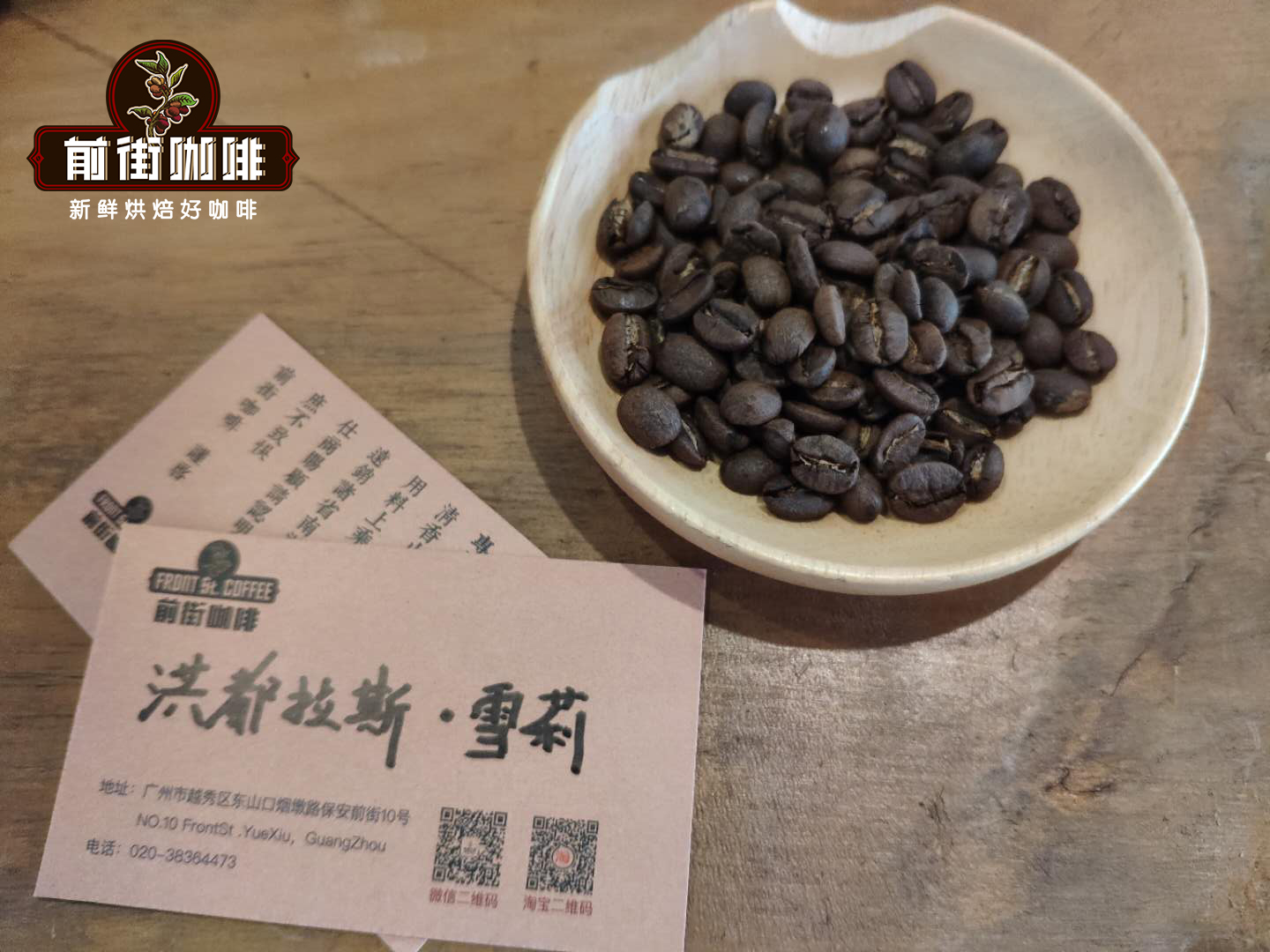
Kaddura (Caturra)
Kaddura, a single gene variant of bourbon, was found in Brazil in 1937. It has better production capacity and disease resistance than bourbon, and the tree is shorter and easier to harvest. Unfortunately, like bourbon, it has the periodic problem of production capacity fluctuation every two years. However, its flavor is similar to that of bourbon beans, and what is more important is that it is highly adaptable and does not need shade trees, so it is also known as Sun Coffee, which can adapt to high-density planting, but it must be fertilized more and increase the cost, so the acceptance of coffee farmers is not high in the initial stage.
As soybean prices soared in the 1970s, farmers switched to Kaddura to increase yields, which were popularized by the Brazilian and Colombian authorities. Farmers began to plant Kaddura in a comprehensive way. By 1990, 14 million bags of coffee beans could be harvested in a 1 million-hectare coffee-growing area, an increase of 60% in production capacity, making Kaddura popular with Central American countries.
Kaddura is suitable for planting at a low altitude of 700m to a high altitude of 1700 m, with strong adaptability, but the higher the altitude, the better the flavor and the yield will be relatively reduced. Kaddura is full of fruit tonality and berry flavor.
Vera Saatchi (Villa Sarchi)
Vera Saatchi is a local mutant of bourbon in Costa Rica, similar to Kaddura, a dwarf mutant in Brazil, and Pacas, a dwarf mutant in El Salvador.
The Vera Saqi plant type is relatively short, the top leaf is green, the angle between the lateral branch and the trunk is about 45 °, the distance between the fruit cluster and the cluster is small, the fruit is resistant to wind and rain, the fruit is not easy to fall, needs adequate fertilizer supply, prefers shading, and performs well in high altitude flavor.
New World (Mundo Novo)
New World (Mundo Novo) is the result of a natural cross between Bourbon and Sumatra iron pickup, first discovered in 1943 in Teteminelos, Sao Paulo, Brazil. The new world was originally planted in the new world market (Novo Mundo), which is now Uruppez.
The first selection of Brazilian New World coffee beans was completed between 1943 and 1952. This variety has been distributed to coffee growers since 1952. The New World was widely cultivated in Brazil in the 1860s and was hailed as the new hope of the Brazilian coffee industry. Later, in 1977, the Institute of Agronomy IAC (Agronomical Institute of Campinas) released a new selection. In Brazil and other South American countries, the New World variety has very high commercial value. The New World has also spread to other countries, but it has not been widely planted locally for a variety of reasons. The new world coffee plant is tall, the leaf tip color is green or brown, the overall bean shape of coffee beans is round, and the particles are larger.
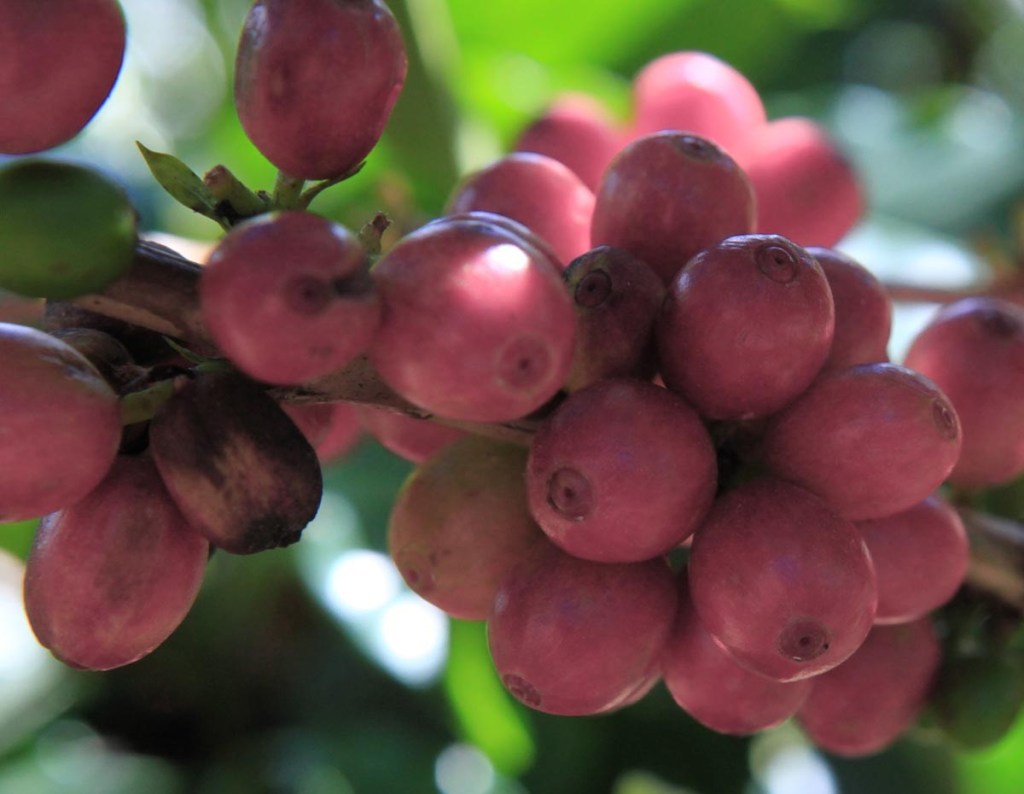
Kaduai (Catuai)
Kaduai is a hybrid of New World and Kaddura. It inherits the advantage of Kaddura's low stature and makes up for the weakness of Arabica fruit. The result is solid, and it is not easy to fall when the strong wind blows. The biggest regret is that its overall flavor is slightly more monotonous than Kadura. Kaduai also has the difference between red fruit and yellow fruit, and red fruit wins more often than yellow fruit. Kaduai, Kaddura, New World and bourbon are the four main varieties of coffee in Brazil.
It was bred in 1949 by crossing Huang Kadura (bourbon mutation) C476-11 and Mundo Novo (Typica x bourbon) CP 374-19. It was released after Brazilian pedigree selection (single plant selection for successive generations) in 1972. There are red and yellow fruits, as well as green varieties Ouro Verde, which have high acidity, but when yellow beans are cold, they taste impure like oil. There are many excellent selected departments in different countries. Catuai in Honduras accounts for nearly half of the acreage. IHCAFE researchers are actively looking for improvements to Kaduai, including hybrids between Catuai and Timor. Catuai is also important in Costa Rica, where yellow fruit Catuai has been planted in large quantities since it was launched in 1985. Catuai was introduced to Guatemala in 1970 and now accounts for about 20 per cent of national production. Catuai is hardly cultivated in other Central American countries.
Catuai soft and mellow, the throat feels like soft water, the finish is delicate, orange sweet, tropical fruit, raspberry, maple syrup sweet, juicy, light wine, white balsam pear, baked biscuit aroma, caramel, vanilla, finish elegant and meticulous, long and multi-layered taste.
Front Street Coffee Costa Rican Mozart
Producing area: Tarazhu, Costa Rica
Manor: Carnett Manor
Altitude: 1980 m
Variety: Kaddura, Kaduai
Treatment method: raisin anaerobic honey treatment
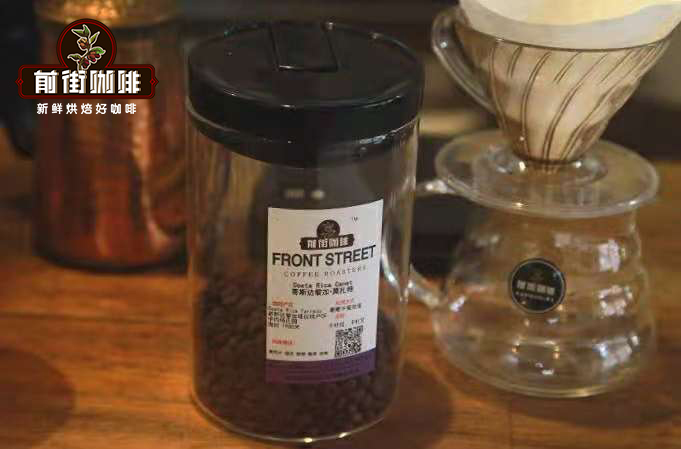
Timor (Tim)
The natural hybrid found in East Tim, an island country at the eastern end of the Nusa Tenggara Islands, has 44 chromosomes close to Arabica, but its flavor is mediocre, Tim's sour taste is low and lack of characteristics, and it is often used to make low-cost formula beans. However, East Tim also has high-altitude pure iron cards treated with water. Before buying, be sure to find out whether it is a hybrid or a pure iron card washing beans, the quality of the two is very different, the former is mediocre, and the latter is amazing.
Katim (Catimor)
In 1959, the Portuguese mixed Brazilian Kaddura with Tim and bred the second generation of Katim, who had strong disease resistance and yield capacity. But the flavor is also poor, and it is an important variety of commercial beans at present. In order to improve the poor evaluation of the Katim Cup, botanists from all over the world have turned back in recent years to interbreed Arabica and Katim for many generations in an attempt to reduce the pedigree of Luodou.
Qianjie coffee Yunnan small grain coffee
Producing area: Baoshan, Yunnan
Altitude: 1200 m
Variety: Katim
Treatment: washing
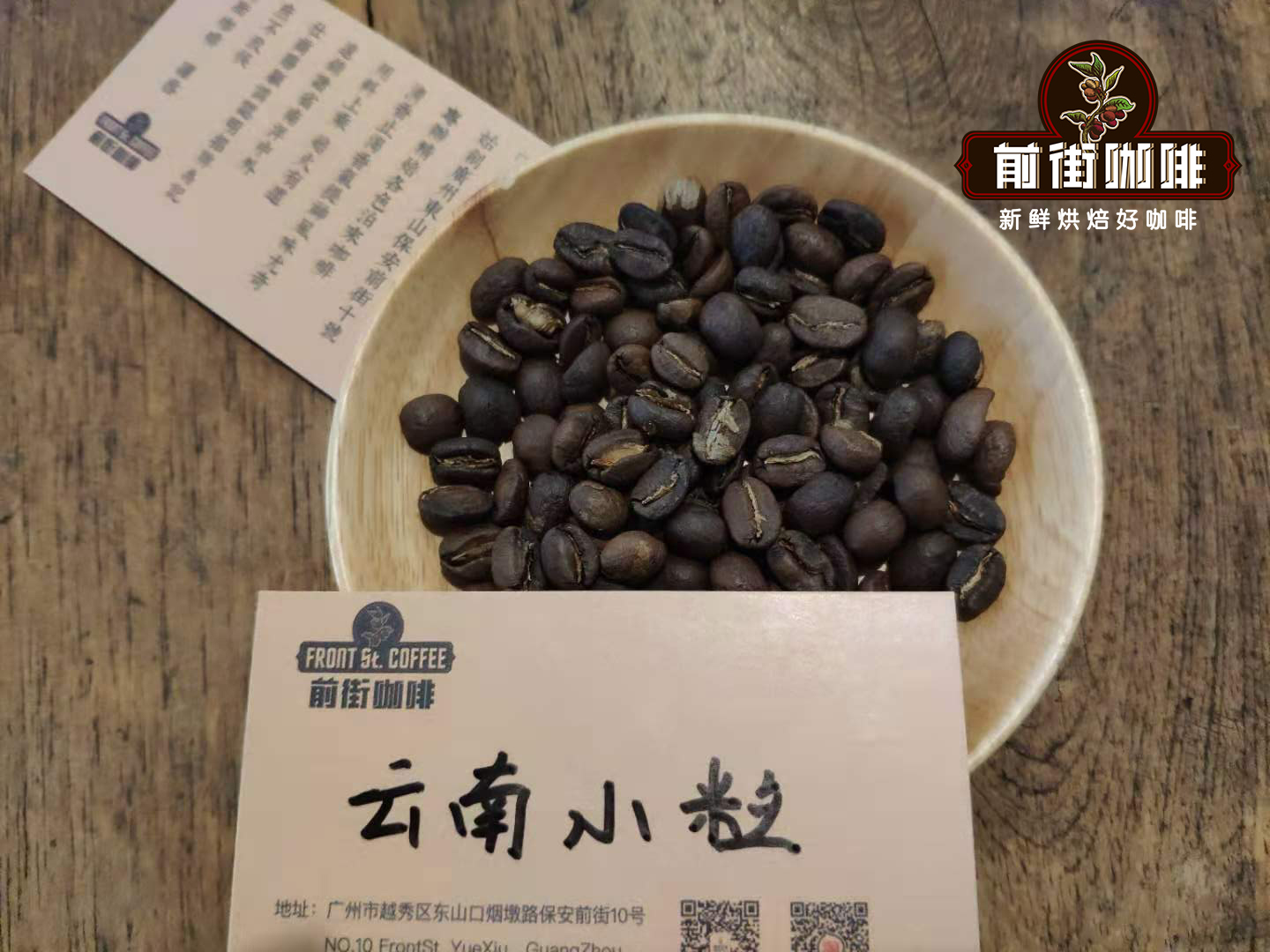
Rose summer (Geisha)
Tibica originated from Geisha in Ethiopia and was introduced to Panama from Costa Rica by Don Pachi in 1963, but no farmer is willing to plant it because of its low production capacity. Daniel Peterson (Daniel Peterson) accidentally found this kind of coffee in his farm, Esmeralda Special Manor, and has dominated international cup test competitions since 2004. It can be called the hottest coffee variety, with strong citrus, floral and toffee aromas, captivating sentient beings. Panama is a country that mainly produces rosy summer coffee.
Geisha is a variant of Arabica native species native to Gesha region of Ethiopia. It has a large bean shape and is unique to Panama. In recent years, it has shone brilliantly in boutique coffee, and it has been known as a boutique queen in just a few years. Geisha appeared in Panama as early as 1960, and many breeding units in Panama also have many seeds of Geisha. In fact, Geisha1931 was found in Gesha in southwestern Ethiopia, where there are many different names. It was imported to Kenya in 1931 and 1932 under the name of Abyssinian and Geisha respectively. In 1936, Kenya took the harvested Geisha seeds to Uganda and Tanzania for planting. In July 1953, Tanzania sent its offspring to Costa Rica, leaving the mother tree in its own country. In 1960, Geisha was formally cultivated through CATIE (Tropical Agronomic Center for Research andEducation) Panama.
The Geisha tree is thin (up to 4.5m) with spreading branches and leaves, long green and red leaves, and late fruiting. Resistant to leaf rust, susceptible to berry disease and nematode, small fruit, medium and low yield. Panamanian rose summer flavor is very unique, can be dinner coffee, exquisite, black tea consistency with bergamot flavor. The rose blossoms with a little peach and melons. The beans produced at high altitude have a good aroma, sweet and clean in finish, with aromas of jasmine and peach, and bright sour fruits, such as tamarind, mango and papaya, which can be compared with Ethiopian water-washed beans. However, its flavor changes rapidly in different cultivation areas, and to maintain its characteristics, it can only be planted on a 1200-meter hillside.
Qianjie Coffee Jade Manor Red Standard Rose Summer
Producing area: Pokuit, Panama
Manor: the veil of Jadeite Manor
Altitude: 1600-1800 m
Variety: Rose summer
Treatment: insolation
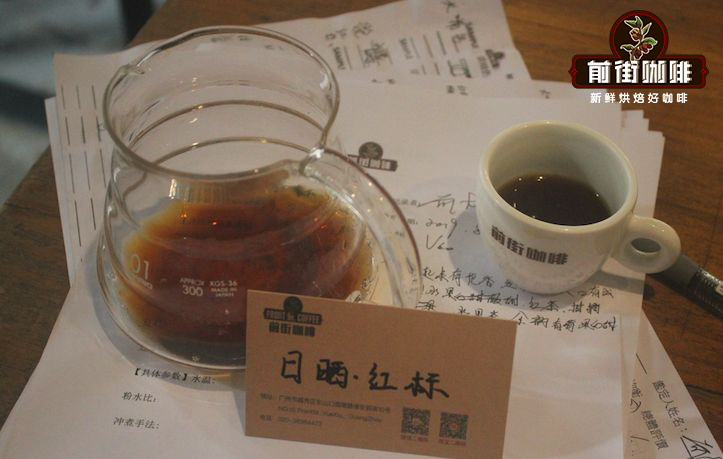
More fine coffee beans, please add private WeChat Qianjie Coffee, WeChat: kaixinguoguo0925
Important Notice :
前街咖啡 FrontStreet Coffee has moved to new addredd:
FrontStreet Coffee Address: 315,Donghua East Road,GuangZhou
Tel:020 38364473
- Prev
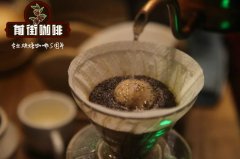
What is Panamanian 90 + Baru Rosa Coffee? Introduction to the Flavor characteristics of Balu Rosa Coffee
Professional coffee knowledge exchange more coffee bean information please follow Coffee Factory (Wechat official account cafe_style) 90 + is an internationally renowned coffee bean production and sales company, and is famous for providing rare and unique raw coffee beans. In addition to working directly with coffee farmers, there is a 134-hectare coffee farm in Panama. Since its official establishment in 2007, customers have been everywhere.
- Next
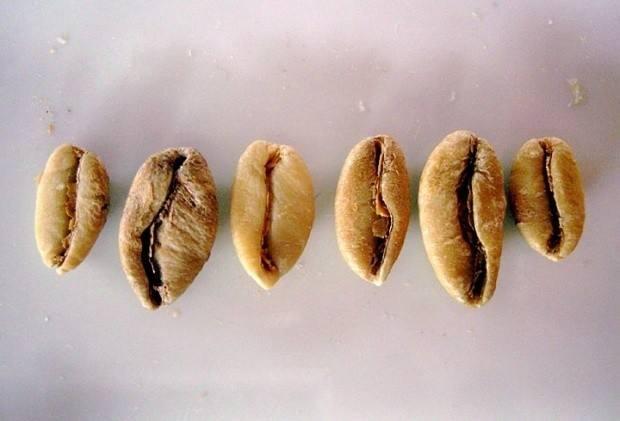
The third forgotten breed: boutique Rabia Coffee? Liberica, is the coffee good?
Professional coffee knowledge exchange more coffee bean information please follow the coffee workshop (Wechat official account cafe_style) the most common varieties in the coffee industry are Arabica and Robsta, but there is also coffee from Liberia (C. liberica), which is often forgotten by the public, and this variety is often recognized by the boutique coffee industry as "bitter, metallic and woody" coffee, so that it is not to be
Related
- Does Rose Summer choose Blue, Green or Red? Detailed explanation of Rose Summer Coffee plots and Classification in Panamanian Jade Manor
- What is the difference between the origin, producing area, processing plant, cooperative and manor of coffee beans?
- How fine does the espresso powder fit? how to grind the espresso?
- Sca coffee roasting degree color card coffee roasting degree 8 roasting color values what do you mean?
- The practice of lattes: how to make lattes at home
- Introduction to Indonesian Fine Coffee beans-- Java Coffee producing area of Indonesian Arabica Coffee
- How much will the flavor of light and medium roasted rose summer be expressed? What baking level is rose summer suitable for?
- Introduction to the characteristics of washing, sun-drying or wet-planing coffee commonly used in Mantenin, Indonesia
- Price characteristics of Arabica Coffee Bean Starbucks introduction to Manning Coffee Bean Taste producing area Variety Manor
- What is the authentic Yega flavor? What are the flavor characteristics of the really excellent Yejasuffi coffee beans?

